A solar cell is like a little machine that turns sunlight into electricity. It’s the building block of solar panels, which you might see on rooftops or in big fields of solar farms.

1. Sunlight Hits the Cell: It provides heat to the cell which is necessary for electron excitation from the p-n junction of the diode. For their energy efficiency Solar companies use a coated glass sheet over solar cell.
2. Knocking Electrons Loose: Inside the solar cell is a special material, usually silicon, that has a unique property. When sunlight hits this material, it causes tiny particles called electrons to get excited and move around.
3. Creating Electricity: These excited electrons want to escape and move to a different part of the cell. This movement of electrons is what we call electricity. The solar cell has an internal system that helps guide these electrons in one direction, creating a flow of electricity.
4. Sending Power Out: The solar cell has metal contacts that capture this flow of electricity and send it out to be used in your home, a battery, or even a power grid.
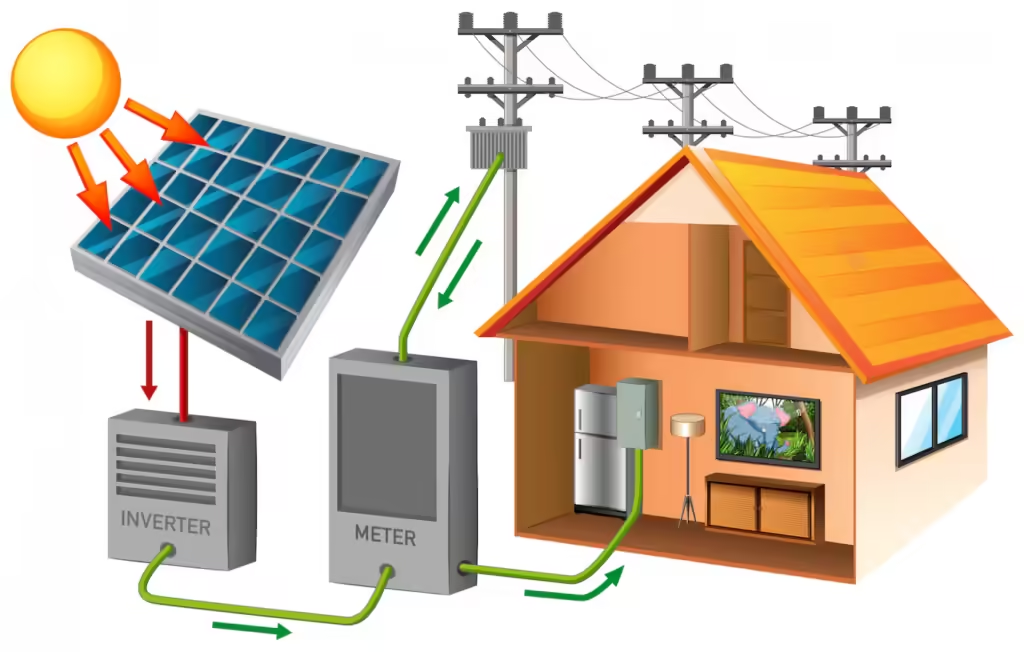
Classification of solar cell
Solar cells can be classified based on their power efficiency, which refers to the percentage of sunlight they convert into usable electrical energy.
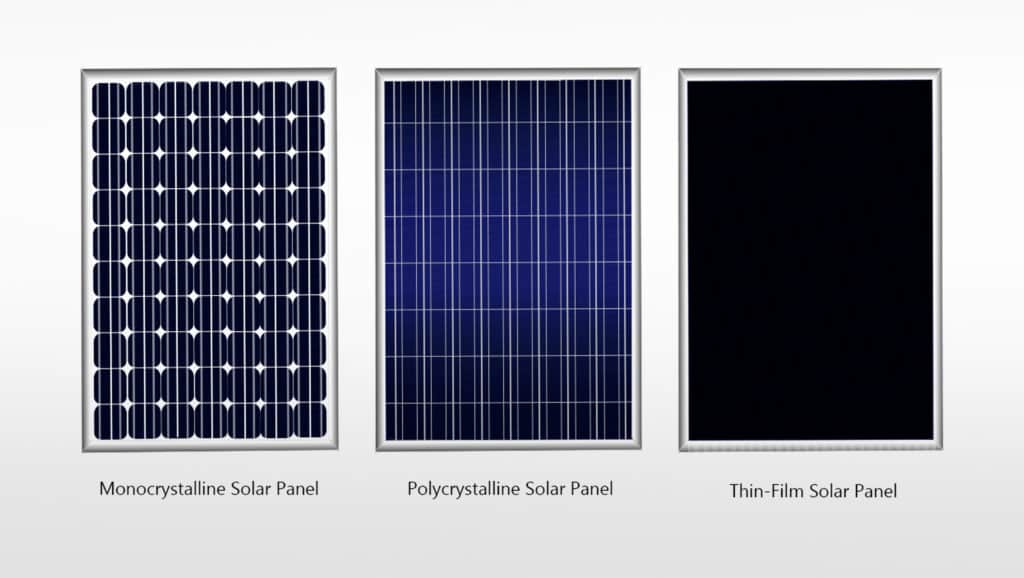
1. Monocrystalline Silicon Solar Cells
- Efficiency: 20-24%
- Description: These are the most efficient and widely used solar cells. They are made from a single, continuous crystal structure, which allows electrons to move more freely, increasing their efficiency.
- Advantages: High power output, long lifespan (25+ years), good performance in low-light conditions.
- Disadvantages: Higher cost due to the manufacturing process.
2. Polycrystalline (Multicrystalline) Silicon Solar Cells
- Efficiency: 15-20%
- Description: These cells are made from silicon crystals that are melted and reformed, reducing the cost and efficiency.
- Advantages: More affordable than monocrystalline, good for large-scale installations.
- Disadvantages: Lower efficiency and performance in low light compared to monocrystalline.
3. Passivated Emitter and Rear Cell (PERC) Solar Cells
- Efficiency: 19-22%
- Description: PERC is an advancement of monocrystalline cells. It adds a layer to the back of the cell that reflects light back into the cell for a second absorption attempt.
- Advantages: Higher efficiency than standard monocrystalline cells, better performance in low-light conditions.
- Disadvantages: Slightly more expensive due to added layers.
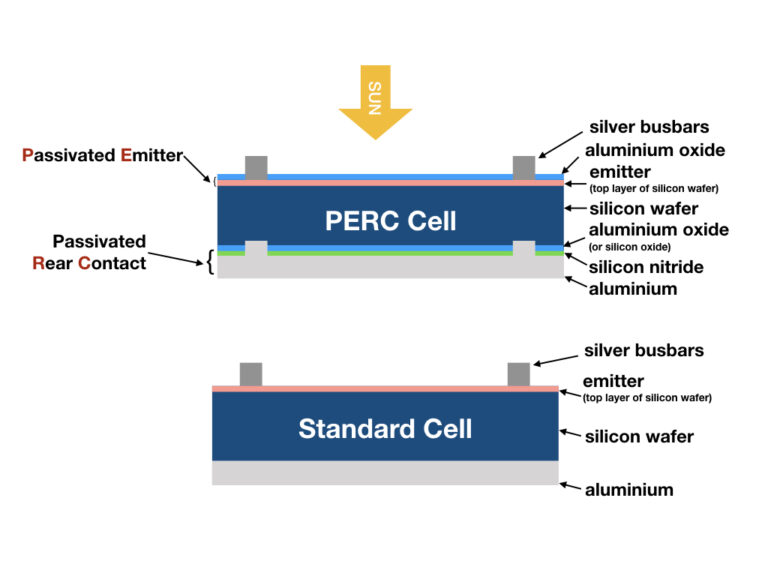
4. Thin-Film Solar Cells
- Efficiency: 10-18%
- Types: Includes Cadmium Telluride (CdTe), Copper Indium Gallium Selenide (CIGS), and Amorphous Silicon (a-Si).
- Description: Thin-film cells are made by depositing one or more thin layers of photovoltaic material onto a substrate. They are lighter and more flexible than silicon-based cells.
- Advantages: Lightweight, flexible, cost-effective for large-scale use, good for low-light or diffuse light conditions.
- Disadvantages: Lower efficiency, shorter lifespan, require more space for installation compared to silicon-based cells.
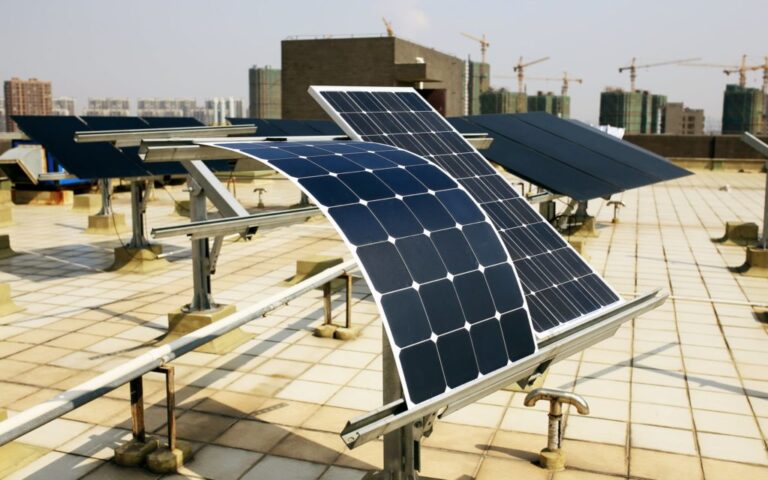
5. Perovskite Solar Cells
- Efficiency: 25-29% (in lab settings, rapidly improving)
- Description: A relatively new and promising technology, perovskite solar cells are made from a class of materials that have a unique crystal structure, allowing for high efficiency at a low cost.
- Advantages: High efficiency, low cost of production, lightweight, can be applied as a flexible or transparent layer.
- Disadvantages: Stability and durability issues, are still in the experimental phase for widespread commercial use.
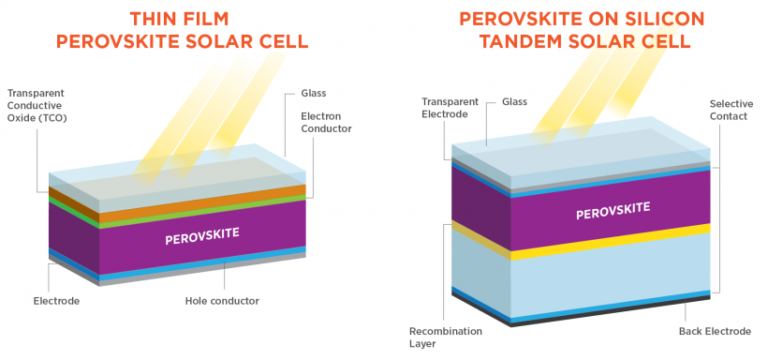
6. Tandem Solar Cells (Perovskite-Silicon)
- Efficiency: 30-35% (in lab settings)
- Description: These cells stack different materials, such as perovskite and silicon, to capture different parts of the solar spectrum, thus increasing efficiency.
- Advantages: Extremely high-efficiency potential, excellent for high-performance applications.
- Disadvantages: Still under research and development for commercial applications, cost and durability challenges.
7. Multi-Junction (III-V) Solar Cells
- Efficiency: 40-50% (in lab settings, concentrated solar applications)
- Description: These cells use multiple layers of different materials (like gallium arsenide, germanium, etc.) to capture more of the solar spectrum.
- Advantages: The highest efficiency available, often used in space and concentrated solar power (CSP) systems.
- Disadvantages: Very expensive, complex to manufacture, not used for typical residential or commercial installations.
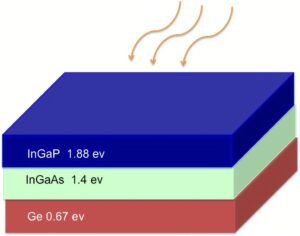
8. Bifacial Solar Cells
- Efficiency: 22-27% (depending on conditions)
- Description: These cells can absorb light from both the front and back, increasing overall power generation, especially in reflective environments (e.g., snow, sand).
- Advantages: Increased energy yield, long lifespan.
- Disadvantages: More expensive, requires special installation considerations to benefit from rear-side generation.
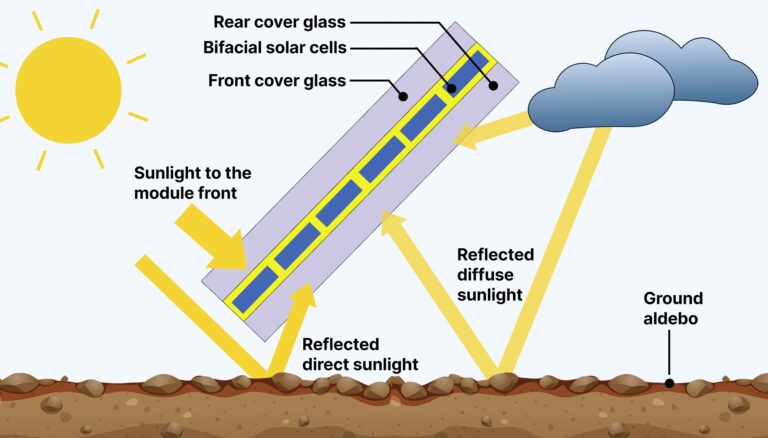
Efficiency Summary
S. No. | Solar Cell Type | Efficiency (%) | Applications |
1 | Monocrystalline Silicon | 20-24% | Residential, commercial, utility-scale |
2 | Polycrystalline Silicon | 15-20% | Large-scale installations, budget-sensitive applications |
3 | PERC (Passivated Cells) | 19-22% | Residential, commercial, higher performance applications |
4 | Thin-Film (CdTe, CIGS, a-Si) | 10-18% | Large-scale installations, flexible/portable applications |
5 | Perovskite Solar Cells | 25-29% (lab) | Research, potentially commercial soon |
6 | Tandem (Perovskite-Silicon) | 30-35% (lab) | High-performance and next-generation applications |
7 | Multi-Junction (III-V) | 40-50% (lab) | Space, satellites, concentrated solar power |
8 | Bifacial Solar Cells | 22-27% (depending) | Utility-scale, high reflection environments |
A recent discovery in green energy
A new discovery in solar energy comes from japan Osaka University, a new molecule synthesized that gives organic solar cell (OSCs) excellent power conversion efficiency. Osaka, japan promising that OSCs are alternative to standard inorganic solar cell, having several others characteristics those pushes in making greener future. One of these qualities is tunable chemistry, which allows scientists to accurately control or modify the parameters of chemical systems to produce the desired results.
Researchers from Osaka University recently published a study in Angewandte Chemie International Edition that described a new organic semiconductor with higher power conversion efficiency than the recognized standard. OSCs are lightweight and flexible and can be mass-produced at a minimal cost. They are thus highly promising for applications such as agrivoltaics, in which enormous amounts of land are used to grow crops while also converting solar energy into power.
OSCs include two organic semiconductors, one to transport charge carriers known as electrons (the acceptor) and one to transfer other carriers known as holes (the donor). When excitons—a combination of an electron and a positive hole—are broken into these carriers, electron-hole pairs flow through a semiconductor. Excitons are firmly linked together, but with enough energy from sunlight, they can dissociate and form a current.
Reference: Nonfullerene Acceptors Bearing Spiro-Substituted Bithiophene Units in Organic Solar Cells: Tuning the Frontier Molecular Orbital Distribution to Reduce Exciton Binding Energy, wang et al., 2024.
How many types of Solar cells are found?
Eight different types of Solar cells are known, named as- Monocrystalline Silicon Solar Cells, Polycrystalline (multi crystalline) Silicon Solar Cells Passivated Emitter and Rear Cell (PERC) Solar Cells, Thin-Film Solar Cells, Perovskite Solar Cells, Tandem Solar Cells (Perovskite-Silicon), Multi-Junction (III-V) Solar Cells, Bifacial Solar Cells
What are Solar Cells made of?
Solar Cells are made of Silicon material which is doped with Aluminium (+5) and Phosphorous (+3) valency molecules. Therefore, it is called as p-n junction diode.

https://virtual-local-numbers.com/countries/27-portugal.html
https://babu88-in.com/login/
I am sorry, I can help nothing, but it is assured, that to you necessarily will help. Do not despair.
I am sorry, that I interrupt you.
No, not at all.
In it something is also idea excellent, I support.
Thank you for your appreciation
It still that?
The theme is interesting, I will take part in discussion. I know, that together we can come to a right answer.
Эта замечательная мысль придется как раз кстати
https://pq.hosting/help/versii-jadra-linux
https://naasongs24.com/1xbet-india-reviews-read-customer-reviews.html
https://bio.site/roscargr
https://bookhalifatickets.com/
https://www.flickr.com/people/202775376@N05/
Pingback: 3 Key Components of Battery: Revolution in Electric vehicle